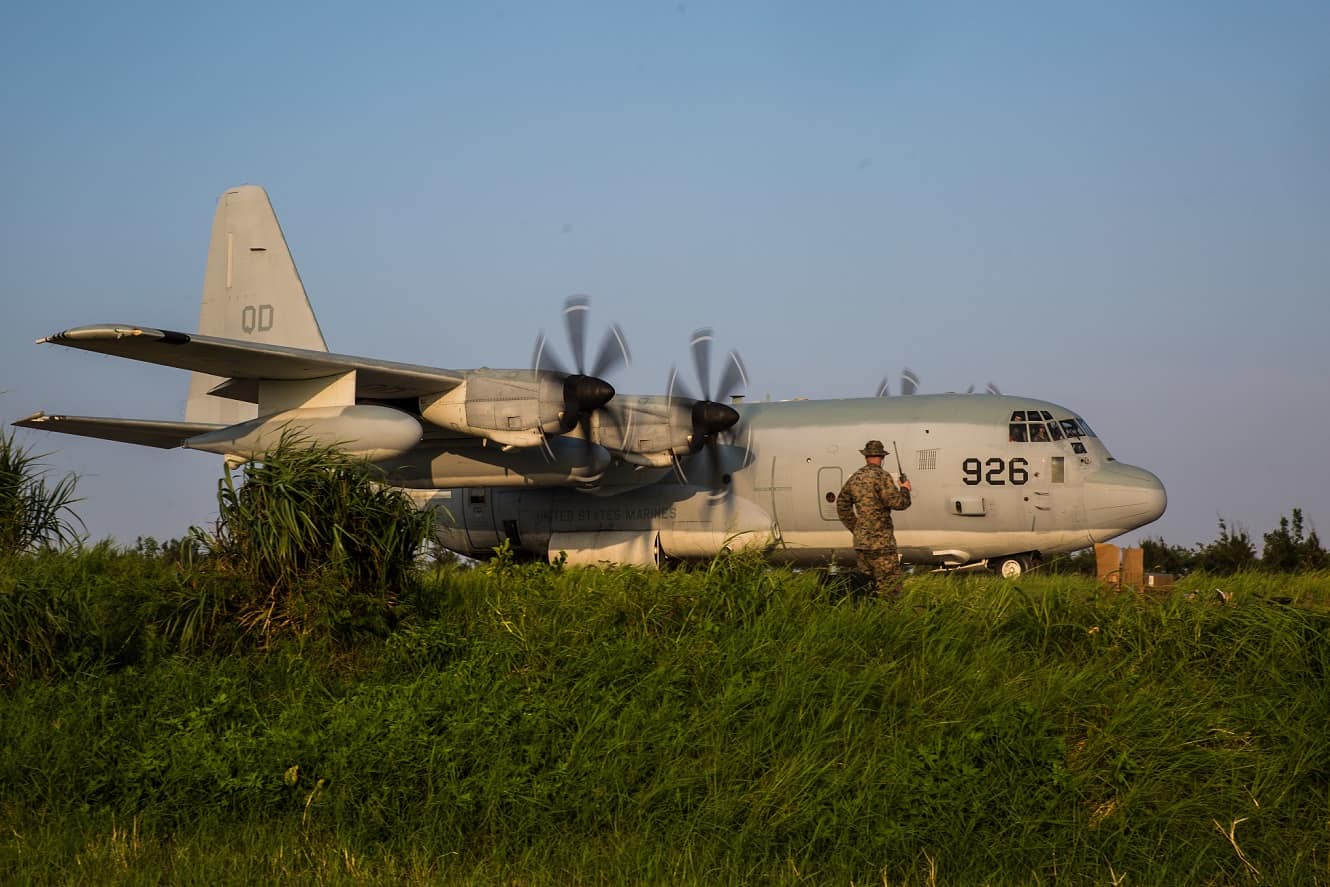U.S. Marines simulate tactical airfield seizure
U.S. Marines with the 31st Marine Expeditionary Unit conduct rapid airfield seizure exercise from ships of the Wasp Amphibious Ready Group to Ie Shima Training Facility in order to set conditions to establish a forward arming and refueling point (FARP), according to a recent service news release.
The 31st MEU and Amphibious Squadron 11, aboard Wasp Amphibious Ready Group ships, conducted a series of sequential operations which simulated naval expeditionary combined-arms maneuver from amphibious assets to shore, utilizing Marine Air-Ground Task Force capabilities integrated across all warfighting domains.
Prior to seizing the airfield at Ie Shima Training Facility, Reconnaissance Marines with the 31st MEU’s Amphibious Reconnaissance Platoon conducted a high altitude low opening parachute jump onto the island to conduct reconnaissance and surveillance of the area. After the reconnaissance team finished surveilling the airfield, Marines with Echo Company, Battalion Landing Team, 2nd Battalion,1st Marines, vertically inserted via MV-22B Osprey tiltrotor aircraft from the USS Wasp (LHD 1) more than 250 miles away, rapidly seizing the objective in just over one hour.
After perimeter security was set at the airfield, a CH-53E Super Stallion air-delivered three crates with the Helicopter Expeditionary Refueling System equipment necessary to establish a FARP. Next, Marines from I Marine Aircraft Wing, Marine Medium Tiltrotor Squadron 265 (Reinforced), and Echo Company moved the gear from the drop zone and began FARP set-up. From delivery to completion, the FARP, which consisted of 5,500 lbs. of fuel delivered by a CH-53E, was set up in four and a half hours.
With the airfield seized and the FARP established, the MEU demonstrated a long-range CASEVAC via KC-130. The airfield seizure involved the 31st MEU subordinate units VMM-265 (REIN) and Echo Company from the Battalion Landing Team, and U.S. Air Force 353rd Special Operations Group (SOG) medical technicians. While coordinating with the FARP officer-in-charge 1st Lieutenant Guirong Cai and the Marine Air Traffic Control Mobile Team on the runway, the KC-130 landed within Echo Company’s security cordon. Ten simulated casualties were treated by three medical technicians from 353rd SOG and given blood transfusions before being loaded into the KC-130 for in-flight medical treatment en route to Marine Corps Air Station Futenma.
“The speed with which the Marines were able to establish the FARP demonstrates a capability that is critical to conducting expeditionary operations in a contested environment. Their proficiency in swiftly setting up a refueling point with 5,500 pounds of fuel demonstrates the 31st MEU’s ability to rapidly refuel and redeploy our air assets as the mission requires,” said Cai.
Overall, from the initial insertion of Reconnaissance Marines to the ground treatment of simulated casualties, the operation was successfully executed in 11 hours, quickly followed by the CASEVAC and with Echo Company prepared for follow-on expeditionary operations.
As the primary forward-Marine presence in the Indo-Pacific region, III Marine Expeditionary Force prides itself on being able to rapidly conduct sequential expeditionary operations, according to Maj. Anthony Cesaro, Air Officer with the 31st MEU.
“This event demonstrates the speed and flexibility of the 31st MEU to quickly seize a limited objective from a significant distance with nothing but airborne assets. In addition, the forces ashore were able to set conditions to support not only rotary wing and tiltrotor FARP operations, but also support larger fixed wing aircraft, such as KC-130s,” said Cesaro. “Furthermore, the simulated long-range joint casualty evacuation exhibited one option the commander would have to help get wounded personnel from an austere forward location back to a higher level of medical care. This type of raid gives the commanders in the Indo-Pacific region the ability to project power and conduct expeditionary operations in a potentially contested littoral environment.”
The 31st Marine Expeditionary Unit, the Marine Corps’ only continuously forward-deployed MEU, provides a flexible and lethal force ready to perform a wide range of military operations as the premier crisis response force in the Indo-Pacific region.


Read More


No comments